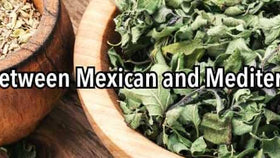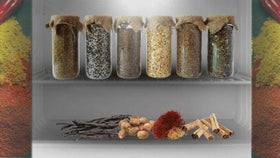History of Edible Gold
These days, it seems that chefs will go to any length to shock or astound their audience and the way the cuisine looks is nearly as important how it tastes. This really shouldn’t come as a surprise, though. While their medium is, in it’s very basic form, purposed to provide sustenance to our bodies, chefs and culinary enthusiasts are very much practicing an ancient art form—and whether it be a painting, a sculpture, or an extravagant plate of food, artists have always strived to create works that capture attention and activate the analytical parts of our brains.
Gold has always been one of the most highly-prized elements on the periodic table, but not due to practical applications. Its status is almost solely based on appearance—even when it isn’t diligently shined, it captures the light and glimmers brightly. It creates an eye-catching contrast when paired with any other color or material.
Its appearance isn’t the only reason why artists of all types are drawn to this material, however. Gold is extremely malleable, meaning it can be utilized in a wide variety of art forms, whether that be garnishing a cake, embellishing the details of a large monument, or flecked onto a painting. As expected of any material that is striking in appearance, easily modified in form, and a naturally occurring element, gold has a rich history in the arts, with evidence of Peruvian civilizations creating “objects of religious significance” from gold that stretches as far back as 1200 BCE and currency artifacts dating back even further.
But what about the history of gold being used in for culinary purposes?
The History of Using Gold in Food
When was gold first used in food?
It’s hard to say when gold was first used as an ingredient in dishes around the world with absolute certainty. Gold is unlike other food ingredients in that it is biologically inert, meaning there are nutritional properties and it simply passes through our bodies rather than being used as sustenance. Meanwhile, most food stuff has either been consumed and digested or biodegradation has occurred. This being the case, unlike the case of gold adornments and currency, there are not food artifacts to refer to and our absolute knowledge on the subject matter is limited to recorded history.
When was the first recorded use of gold in food?
Even though we can reasonably assume that gold was used in food further back in history based on its association with religious ceremonies, cultural obsessions, and more, the earliest archeological evidence of humans ingesting gold does not date back quite as far as other art forms using gold. Still, evidence of ancient Egyptians ingesting gold for spiritual purposes and its believed divine properties.
This evidence revolves around ceremonial elixirs, rather than as an additive to cuisine and dates back several thousand years prior to the earliest recorded recipes including gold in their ingredient lists. In the early fifteenth century and beyond, several chefs recorded their recipes for meals including precious metals and stones. The purpose of inclusion was not to enhance flavor but to incorporate believed health benefits into the meal, for aesthetic appeal, or both.
How is edible gold used in food today?
Today, edible gold is still being used as an embellishment in cuisine. This culinary adornment has been frequently used in baking, garnishing wedding cakes, donning truffles, and more, but the trend has stretched into savory applications and chefs are more frequently flexing their culinary artistry muscles by including gold in everything from pizza and chicken wings to sushi and tacos.
Want to explore ideas for using edible gold in your next edible art project? Here are a few ideas:
Baked Brie with Vanilla Berry Compote and Gold Leaf







Slofoodgroup
Autor